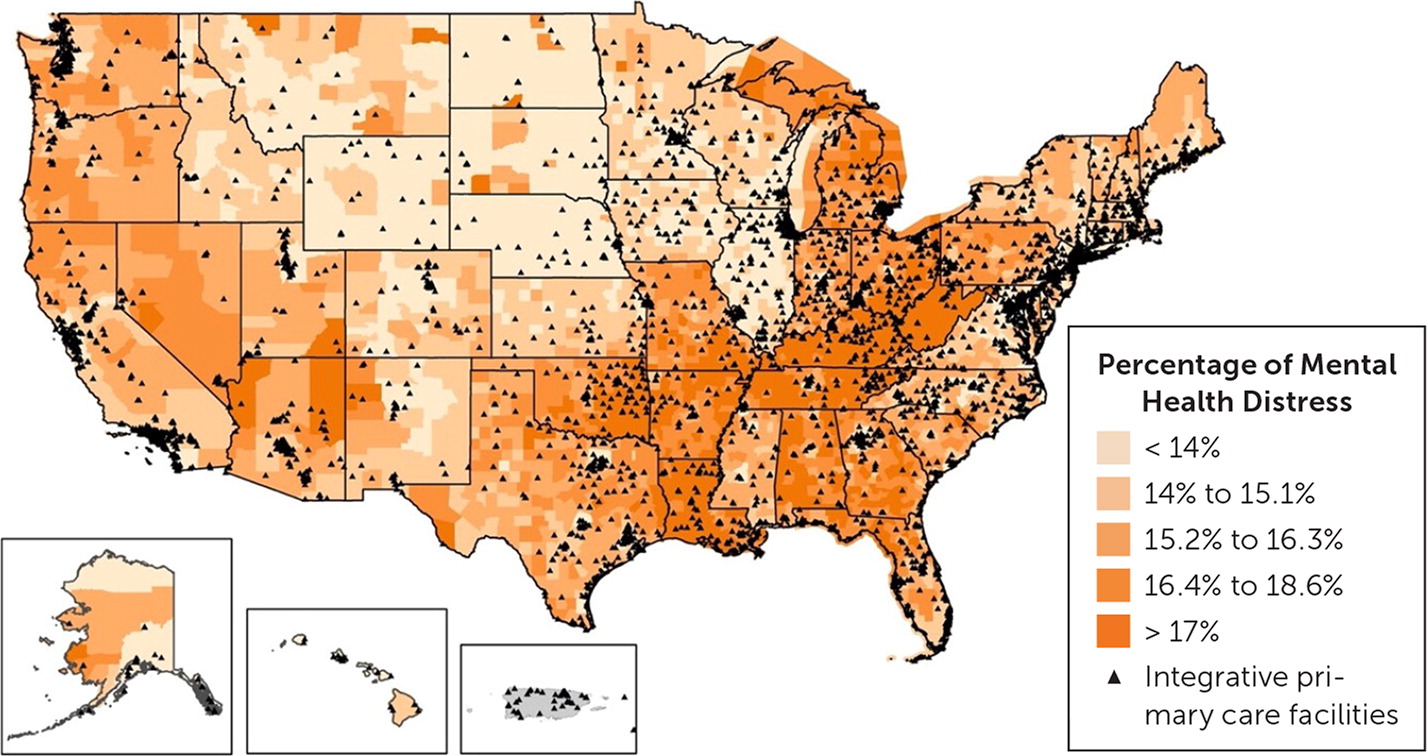
Am Fam Physician. 2023;107(6):580-581
Author disclosure: No relevant financial relationships.
The demand for social and mental health services grew dramatically during the COVID-19 pandemic, increasing the need for integrated behavioral health in primary care.1 Mental health integration existed in various forms, but co-location did not correlate with prevalence of mental distress. Analysis using national data demonstrates that, in 2020, integrated clinics existed across the United States; however, the areas with highest mental distress had lower integration and access.
The definition of an integrated behavioral health clinic is broad, from co-located professionals and care management models to fully accredited Primary Care Behavioral Health centers with warm handoffs between primary care physicians and behavioral health clinicians. The integration of behavioral health services within primary care practices decreases costs for clinics and patients, increases patient satisfaction, and improves patient health outcomes.2–4 We compared areas with reported poor mental health with the locations of integrated primary care facilities.
We analyzed the Behavioral Risk Factor Surveillance System 2020 survey, which included the question, “Now thinking about your mental health, which includes stress, depression, and problems with emotions, for how many days during the past 30 days was your mental health not good?” We classified an answer of 14 or more days as having poor mental health, consistent with prior literature.5 Results were compiled at a county level. We included integrated primary care facilities registered with the Substance Abuse and Mental Health Services Administration.
Integrated primary care facilities are located in all 50 states and territories but are notably lacking in areas with a high prevalence of mental health distress in rural Kentucky, Louisiana, Tennessee, and West Virginia. Conversely, high-density clusters of these facilities are present in areas with lower rates of mental health distress, including Dallas, Tex., and Atlanta, Ga. (Figure 1).

Integrated primary care facilities can address acute mental health conditions and stressors associated with chronic physical health conditions. They are also associated with improved mental health outcomes such as decreased Patient Health Questionnaire-9 scores and improved physical health treatment experiences.6,7 Areas with higher density of integrated primary care facilities show an association with decreased mental health distress and are also likely correlated with improved physical health.
The ability of integrated primary care facilities to offer comprehensive services to their patients is especially important when considering that opioid use disorder is highly associated with co-occurring mental illness. In states where there is a greater need for these facilities, there is also an urgent need for physicians who can provide biopsychosocial treatment for opioid use disorder.8
Further research is needed to assess what resources are required for clinics to successfully build out integrated primary care facility services in high-need areas. Inadequate reimbursement may be a limiting factor for existing primary care clinics seeking to integrate behavioral health services.
